Mesopotamia is located between the Tigris and the Euphrates rivers which converge at the Persian Gulf. The name itself is a Greek word meaning “the land between two rivers.” It is in the eastern Mediterranean region and is bordered by the Zagros Mountains on the northeastern side and the Arabian Plateau on the southeastern side. Mesopotamia covers modern-day Iraq, Kuwait, parts of Saudi Arabia and parts of the Turkey–Syria and Iran–Iraq borders.
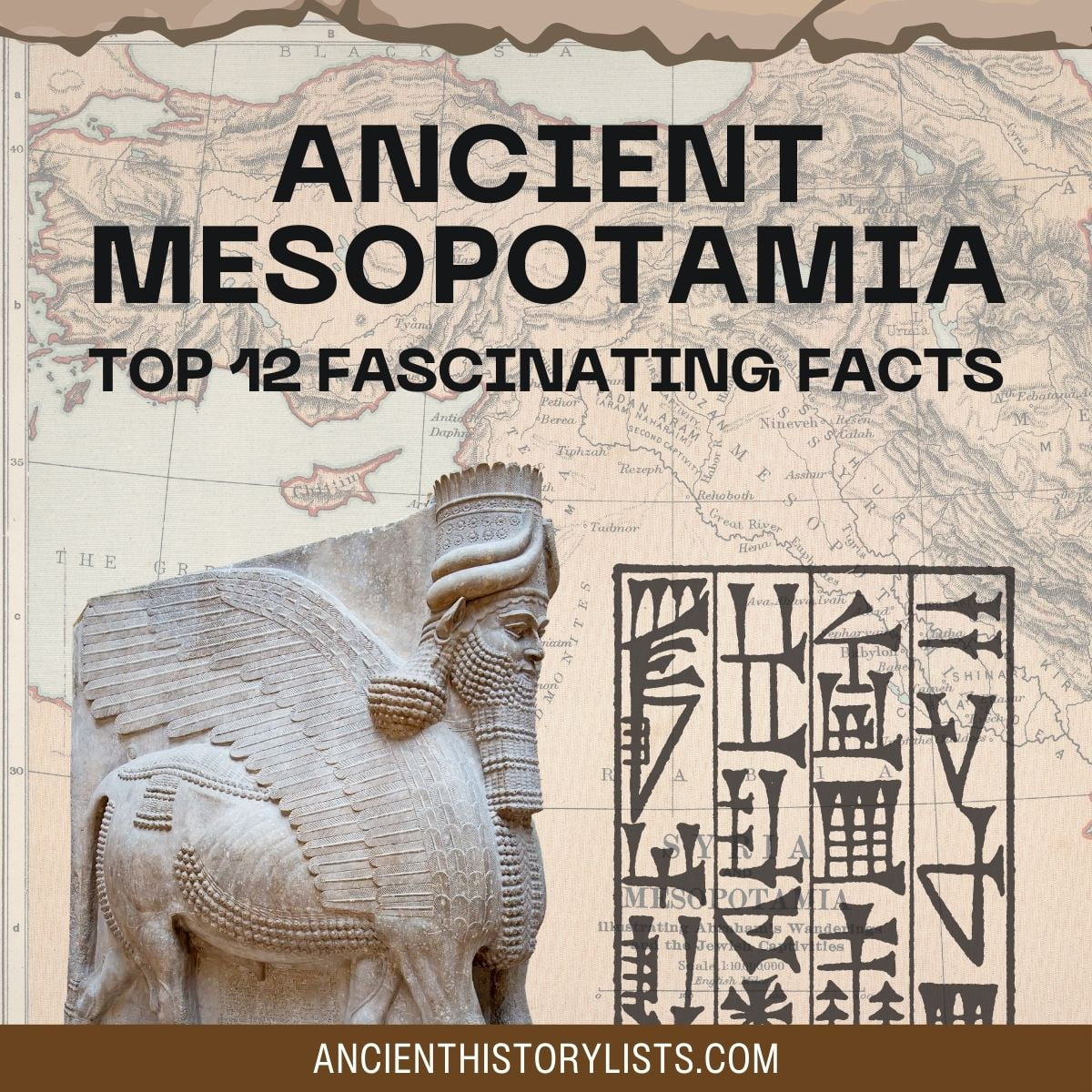
The Mesopotamian civilization was not like other civilizations such as those of Egypt or Greece. Its culture was diverse, and it was more like a trading or cultural exchange point for all the civilization of the same period. It was a melting pot for many different civilizations, ethnicities, and religions which were all influential during various periods of history. Mesopotamia is commonly known as the cradle of civilization.
1. The Sumerian Civilization
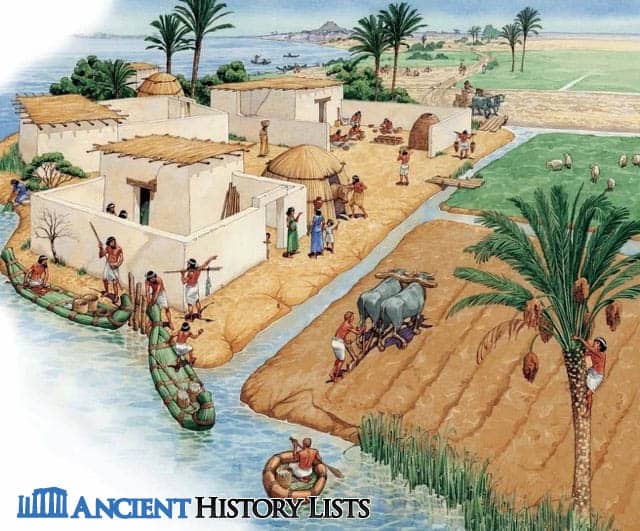
The Sumerian civilization was the first urban civilization in ancient Mesopotamia. It began in the foothills of the Taurus and Zagros mountains, but by 9000 BC, people had started to move towards the southern region of Mesopotamia. Soon, farming began to develop which led to the introduction of artificial irrigation in the region. The irrigation system consisted of a network of canals that helped in the transfer of water over large areas.
The Sumerian city of Eridu was the first city in the world and was located on the coast of the Persian Gulf in southern Mesopotamia. The city was founded in approximately 5400 BC by the Ubaidians, the region’s first civilizing force, and they set up businesses and trading routes all over the area. This has led to the claim that the Sumerians established the world’s first trading center.
2. Uruk, the Largest City
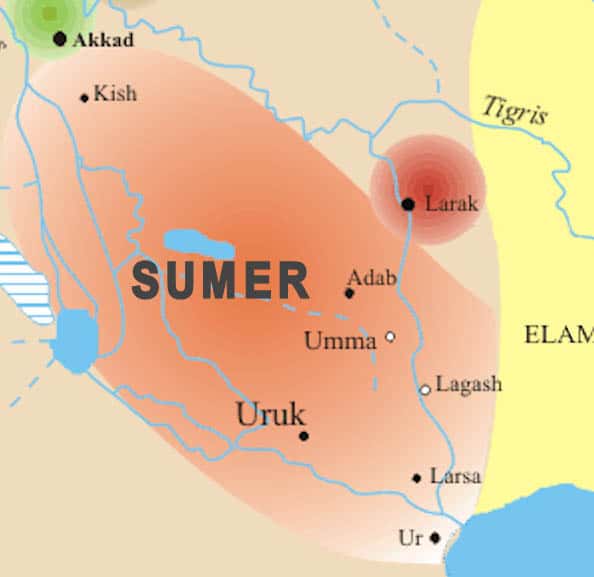
The Sumerians had established firm control over Mesopotamia by 3000 BC. Their kingdom consisted of many prominent cities at strategic locations to facilitate trade and commerce such as Eridu, Nippur, Lagash, Uruk, Kish, and Ur. There was no centralized government, and the whole region enjoyed equal power and accessibility.
The city of Uruk, in particular, played an important role in city management and urbanization as it was the largest city in the world at that time, extending over an area of 6,000 square meters. It was walled on all sides except for its entrance gates. Uruk was not only significant in size but also had a population of around 60,000 to 80,000. The city was located 30 kilometers east of what is now Samawah in Iraq.
3. The Invention of Copper Fabrication
Copper was the first metal to be extracted from its ore, and this was done around 5000 BC. By 4000 BC, it was being cast into molds, and soon its alloy – bronze – was created by mixing copper with tin around 3500 BC. The fabrication of copper allowed the Sumerians to use it in the manufacture of small objects such as razors, arrowheads, and utensils.
Over time, the manufacturing process improved, and the Sumerians were able to incorporate ornate geometric patterns into their designs on jugs and other utensils. They were also able to make statues of their gods. The Imdugud Relief is a large copper panel which has been beaten flat and attached to a wooden background with a bitumen lining. It shows a lion-headed eagle holding on to two stags.
4. The First Great Mesopotamian Empire
In the 25th century BC, the Sumerian king of Lagash, Eannatum, began a military campaign with the aim of annexing all the Sumerian cities and bringing them under his rule. He succeeded in his attempt and even brought other cities beyond the Sumerian border under his control.
Sargon the Great of Akkad in northern Mesopotamia captured Sumer from Eannatum around 2270 BC and went on to form the Akkadian Empire. The Akkadian Empire is the earliest verifiable empire in this geographical area, covering all of southern Mesopotamia and parts of what are now Syria, Anatolia, and Western Iran.
There were several rebellions during his reign, and as a result, he formed the world’s first professional standing army. Sargon of Akkad was idealized as a model for Mesopotamian emperors for two millennia after his death.
5. The Rise of the First Babylonian Empire
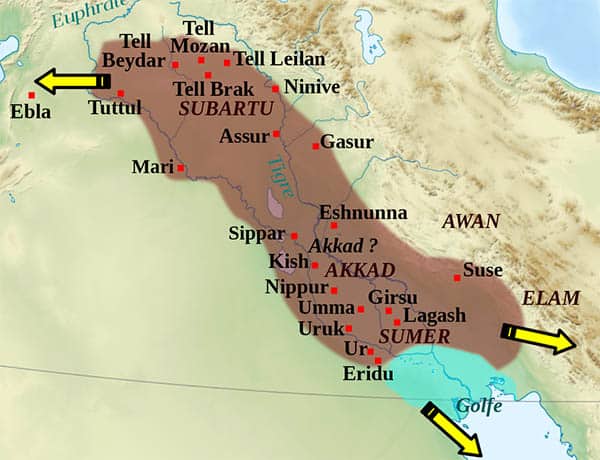
The Akkadian Empire existed from around 2334 BC to 2154 BC until the Neo-Sumerians of the Sumerian dynasty settled in the city of Ur. The Neo-Sumerians governed the city for the next 100 years.
The Mesopotamians welcomed all people to their cities, and in around 2000 BC, many nomadic people began to settle in the southern part of Mesopotamia. These nomadic people were called the Amorites, and they began to adopt Sumerian and Akkadian traditions as their own.
The Amorites started expanding their territories and took over other cities, leading to the downfall of the Neo-Sumerian Empire. Sumu Abum, an Amorite chief, rose to power as the ruler of the first dynasty of Babylon.
6. The Wheel

The wheel is arguably one of the most important inventions, but it was not originally designed for transportation. Archaeological evidence suggests that the first wheels were used as potter’s wheels, and the oldest surviving wheel was found in the southern Mesopotamian city of Ur which dates to around 3100 BC.
When the Mesopotamians invented the wheel, they had already discovered many other things such as irrigation, canals, and housebuilding, but the wheel opened the door wide for further developments such as chariots, the wheel-axle, and pulleys.
7. Ancient Beer Recipes
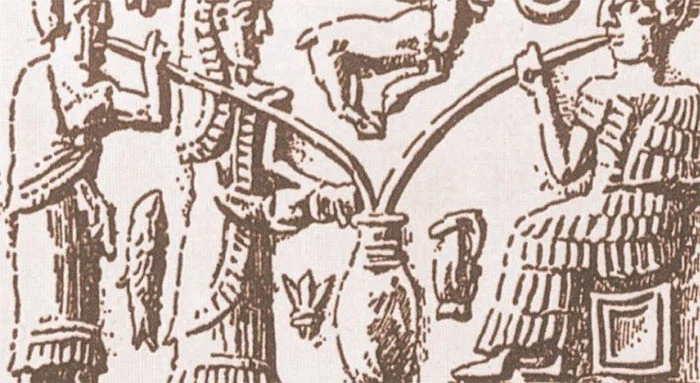
Beer was easy to make as it needed only cereals, sugar, and time to ferment, so it became a popular drink in the fifth millennium BC. The oldest recipe for beer comes from Mesopotamia and was first brewed from barley.
Beer was so popular that the Sumerians even had a goddess of beer (or alcohol in general) called Ninkasi and there are poems dating from around 3900 BC dedicated to her.
Beer formed part of the feudal economy, where workers received food as part of their salary. Archaeological evidence suggests that around five millennia ago, the Mesopotamians used to eat from circular bowls and drink beer from conical flasks, and there are inscriptions to indicate that beer was supplied as payment for their labor.
8. Town Planning
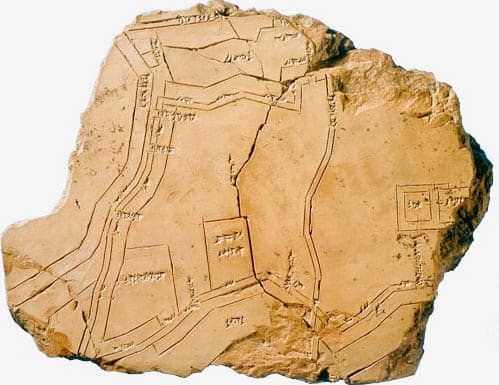
The poem, the Epic of Gilgamesh, gives us an indication of early town planning and architecture. The poem describes the construction of the city of Uruk, which played a leading role in the urbanization of the Sumerian civilization in 3500 BC.
The poem describes how the walls surrounding the city were constructed of baked bricks, and how there was a foundation beneath the wall to support the brickwork and transfer the load below ground to avoid structural issues.
The Sumerians even created a standard system to measure the area of the city which included the orchards, the claypits, and the ground of Ishtar’s temple. This measured one square mile, and Uruk also has three square miles of open ground.
9. Cursive Writing
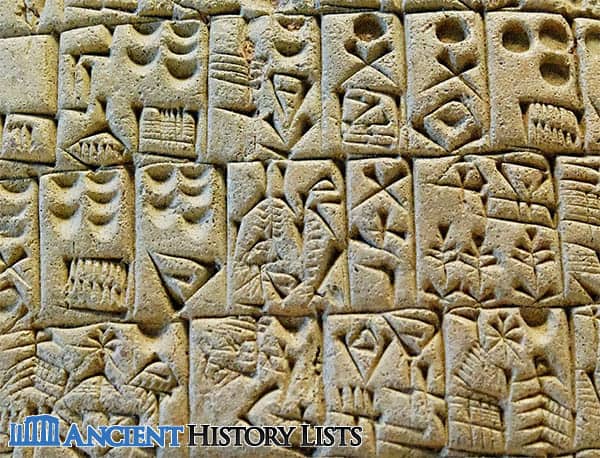
Writing has always been a reliable way of passing knowledge to the next generation. Although written texts existed in other civilizations such as the Indus Valley, Egyptian, and Greek civilizations, it was also very important in Mesopotamia. The first written records surfaced in the fourth century BC in Sumer; this was an early form of cursive writing known as cuneiform.
The writing was named after the Latin word cuneus meaning “wedges” as the script takes a wedge-shaped form. The Sumerians used to write with a stylus made of reed on soft clay tablets which were then dried to form permanent records. The earliest forms of writing were pictograms or images to represent ideas, but as time went on, they developed into more of a complex algorithm which was harder to interpret.
10. Cartography
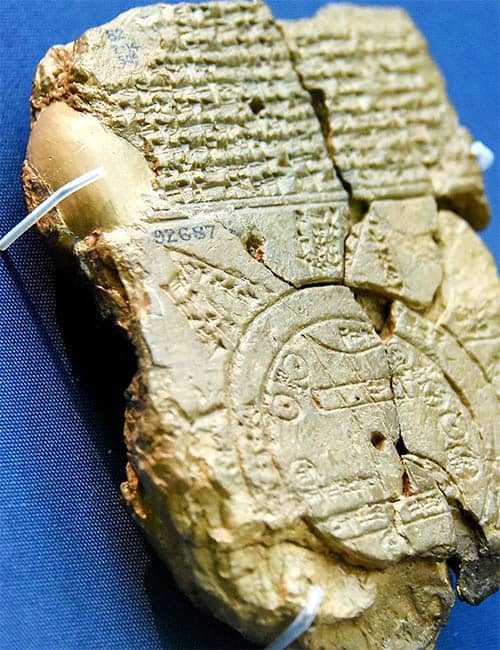
The most primitive maps that exist today are carvings on rocks and caves, mostly representing the local topography of the area. The earliest of these dates back to 25,000 BC and is a map of Mesopotamia.
The Sumerians used clay tablets of around 18 x 21cm to precisely mark landmarks on the area they wanted to draw. The map of the ancient city of Nuzi was created sometime between 2360 and 2180 BC and is most probably the oldest road map. It clearly shows the advanced topography and surveying skills of the ancient Mesopotamian cartographers.
11. Code of Conduct
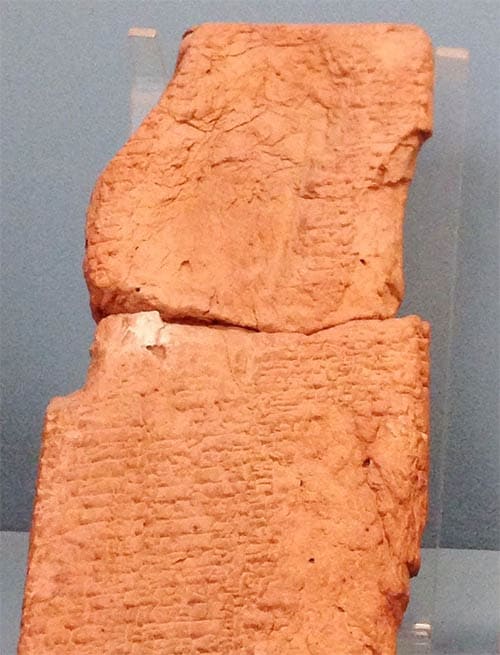
The Code of Ur-Nammu was inscribed sometime between 2100 and 2050 BC and is the oldest surviving code of conduct or code of law. Experts believe that the code is of Sumerian origin and is considered to be one of the most important discoveries from the Mesopotamian age. The Code of Ur-Nammu was written on clay tablets, 30 of which have been restored by historians.
It is thought that there may be an even older law which outlines legal reforms that took place in the city of Lagash around the 24th century BC. However, there is no surviving evidence for this.
12. Astronomy, Science, and Mathematics
The Mesopotamians had an advanced knowledge of astronomy, and evidence of this has been found in the form of ancient astronomical instruments. One such instrument was the Venus Tablet of Ammisaduqa which made a note of celestial occurrences and interpreted astronomical omens.
The Sumerians are also believed to have been the first to work out written mathematics. Evidence shows that typical math questions would be asked in the form of geometric figures, but their solutions would most probably be in the form of algebraic equations. The calculations were in the form of base 60 and were impossible to calculate without a written format.
Conclusion
The above list outlines some of the most fascinating facts about ancient Mesopotamia where many of the inventions and innovations of the modern world began. It is no wonder, then, that this ancient culture has become known as the cradle of civilization.